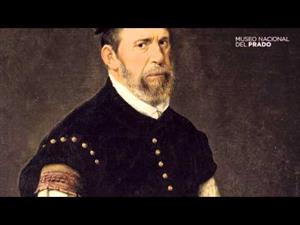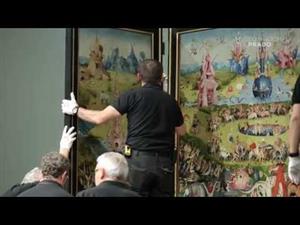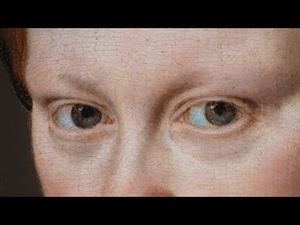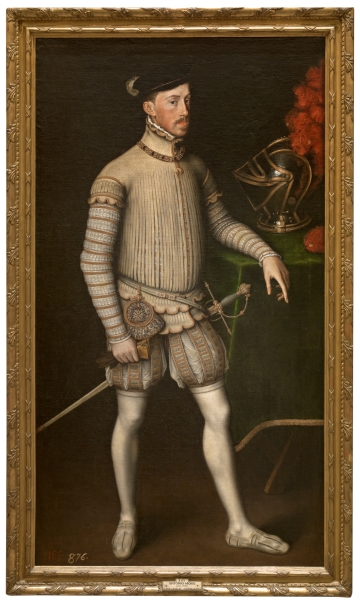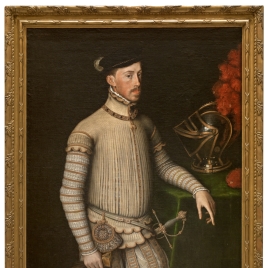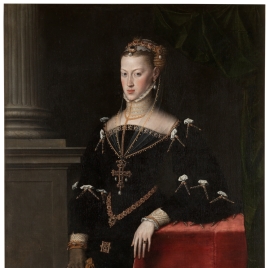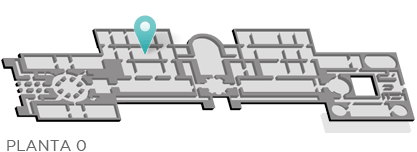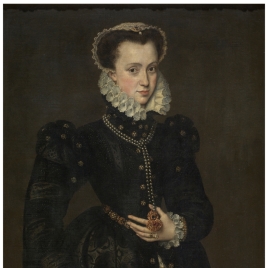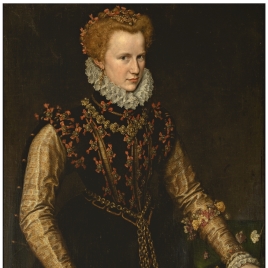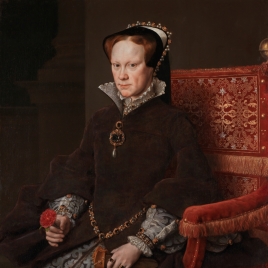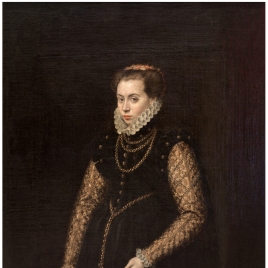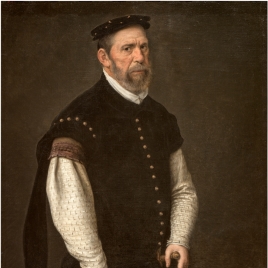Emperor Maximilian II
1550. Oil on canvas.Room 056
The son of Ferdinand of Austria, then King of Romans and next emperor (1556-1564) of the Germanic Holy Roman Empire, and his wife Anna Jagellonica, queen of Hungary and Bohemia, was born in Vienna on 1 August 1527. He was educated in Spain alongside his cousin, the future Philip II, and from an early age practiced the profession of arms, later on entering combat on the side of Emperor Charles V (1519-1556) against the association of Protestant princes known as the Schmalkaldic League, which was defeated at the battle of Mühlberg. The monarch chose him as a husband for his daughter Maria of Austria. Maximilian and Maria married in 1548 and were regents of the Spanish kingdoms in the absence of the heir during his long journey around Italy, the Netherlands and Germany between 1548 and 1551. However, his uncle´s attempts to pass the crown of the empire to his son Philip II, to the detriment of Ferdinand and, naturally, Maximilian himself as the latter´s eldest son, distanced him from the Spanish court and imperial environments, so much so that he struck up relationships with the German Protestant princes, triggering a family conflict. When at last Charles V abdicated (1556) as emperor and Ferdinand was proposed as his successor, Maximilian was able to feel secure. Chosen as King of Romans in 1562, he inherited the sovereignty of Bohemia that same year and was crowned king of Hungary in 1563. When Ferdinand I died in 1564 he acceded to the imperial throne, remaining there until his death in Regensburg in 1576. His rule was characterised by a particular policy of tolerance towards Protestantism, the religious postulates of which do not appear to have been very far removed from his own ideas. He was succeeded successively by his sons Rudolf II (1576-1612) and Matthias I (1612-1619) as emperor. When Philip II´s heir, the prince Don Carlos, died in 1568, Maximilian entertained hopes of placing one of his sons on the Spanish throne. He achieved this in a sense, as he married his daughter Anna of Austria to Philip II, which led to a rapprochement with the Spanish branch of the dynasty. Their son, King Philip III (1598-1621), was therefore Maximilian´s grandson. This portrait, which forms a pair with one of his wife (Museo del Prado, Madrid) executed the following year, was designed to be similar to that which Titian painted of Philip II (P2110) in Milan in 1548, albeit reducing the space and adding a detailed description of the textures of all the motifs visible in the painting with an immaculate precision of detail. The future emperor is portrayed standing, full length and life size in a three-quarter position with his head turned to the left and silhouetted against a dark background, which enhances the volume of the figure. He carries a sword and is dressed in white with a rich leather travelling jacket and breeches; the black cap on his head is adorned with a feather and he wears the collar of the Order of the Golden Fleece. He holds his gloves in his right hand and leans his left forearm on a table with a green velvet covering on which rests a finely chiselled visored battle helmet adorned with a crest of reddish feathers. It is actually a typical portrait of a man of high birth and soldier who emanates the serenity and distinction inspired by the Spanish ideal of austere and dignified presence. A particularly noteworthy feature is the master´s acknowledged skill at capturing the sitter´s spirit with psychological depth, as if to achieve a sense of trueness to life through the care taken over the almost tactile appreciation of the intrinsic qualities of the matter defining each of the details that make up this severe image of the embodiment of political power in the 16th century, in a natural and unostentatious manner (Text drawn from Luna, J. J.: From Titian to Goya. Great Masters of the Museo del Prado, National Art Museum of China-Shanghai Museum, 2007, pp. 367-368).

